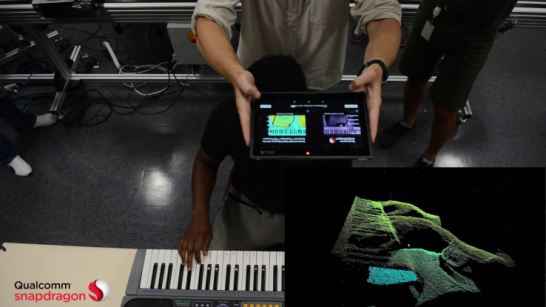2017-08-15Source:Tech Crunch

Qualcomm’s Spectra Module camera program is getting a few key new members set to arrive in the latest generation of Android handset. Most notable among the new options are depth sensing and biometric authentication, letting users unlock their phones with an iris scan.
The Spectra system essentially gives manufacturers a way to swap out different sorts of camera functionality during the manufacturing process — an ability enabled by the recent proliferation of dual-lens cameras. In most instances so far, the second lens has been used to enhance or supplement the first, bringing telephoto zoom or improved image quality through a black and white sensor.
The most compelling new addition is a pair of depth sensing cameras. The passive version is the budget/entry-level module that mostly enhances image capture. The ability to sense two distinct depths makes it possible to add a bokeh effect, keeping the subject in focus, while blurring out the background. According to Qualcomm, the new module separates the two more precisely than on existing Android phones, which can have difficulty separating the two.
The higher end active depth sensing can do some pretty impressive things in the demos I’ve seen. This system uses three camera modules, including an IR illuminator and an IR camera. The illuminator fires out a series of dots that are detected by the camera, creating a complex depth map. In the demo, the Qualcomm team had someone playing a piano and was able to recreate the subtly of pressing down on the keys.
More practical applications include better face detection for photo recognition and authentication that can’t be easily spoofed. There are also all sorts of potential VR and AR opportunities with this kind of depth sensing on-board. As such, you’ll likely not see it not only on high-end handsets, but all standalone VR systems.
Qualcomm is making a big push in that direction as well. The VR 835 Platform is designed to enable systems that aren’t tethered to a computer and don’t require a phone for input. The standalone systems certainly won’t be as high powered as, say a Rift or a Vive, but with hardware focused solely on VR, they could potentially offer a better experience than a Samsung Gear VR or phone enabled Daydream VR experience. And the depth module could let manufacturers build image sensing into the system, so users can track their hands and avoid bumping into objects.
Make no mistake, Qualcomm’s timing on this is very deliberate. This news isn’t tied to any specific product, but the company is looking to get out in front of the iPhone 8 launch. That device is widely expected to feature its own depth sensing camera, as part of Apple’s own big push on photo effects, facial scanning and AR, and the chipmaker really wants to be a part of that conversation.
By revealing its plans a month ahead of Apple, Qualcomm will undoubtedly get name dropped in a number of pieces about the iPhone and perhaps gets to take some wind out of the company’s sails. There’s certainly no love lost between the two tech giants, as years of on-going lawsuits can attest.
Qualcomm expects these solutions to actually start rolling out in handsets sometime early next year. Most likely that timing will make the modules a key part of next year’s Mobile World Congress announcements in February.